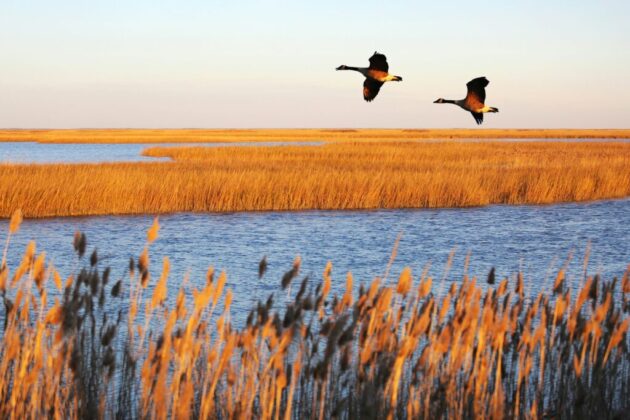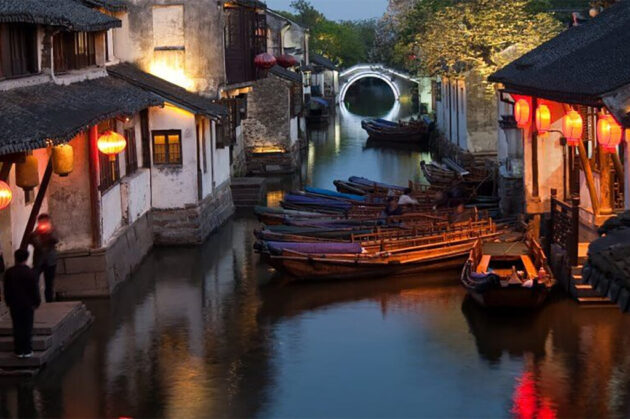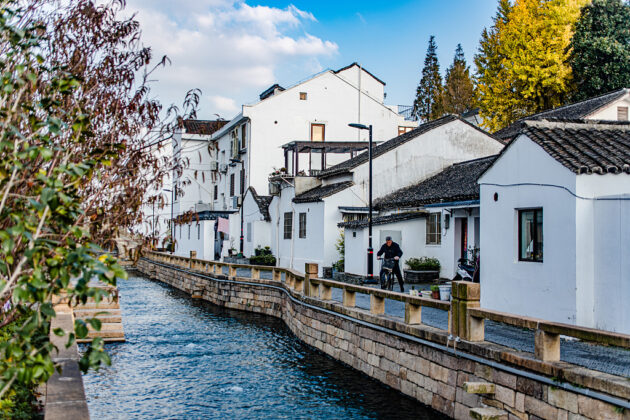Bombay Hook National Wildlife Refuge, located on the eastern coast of Delaware, is a paradise for nature enthusiasts, bird watchers, and photographers.
Established in 1937, the refuge spans over 16,000 acres of diverse habitats including tidal salt marshes, freshwater impoundments, and upland fields. This guide will help you plan a memorable visit to this serene and beautiful destination.
Getting There:
Bombay Hook National Wildlife Refuge is easily accessible by car. It’s approximately 1.5 hours south of Philadelphia and about 2 hours east of Baltimore. The refuge’s main entrance is located on Whitehall Neck Road, just off Route 9.
Best Time to Visit:
The refuge is open year-round, but the best times to visit are during the spring and fall migrations (April to May and September to November). During these periods, you can witness thousands of migratory birds, including snow geese, shorebirds, and waterfowl.
Entrance Fees:
A small entrance fee is required for access:
- Daily: $4 per vehicle
- Annual Pass: $12 per vehicle
Consider purchasing the America the Beautiful Pass if you plan to visit multiple national parks and refuges.


Things to do: Bombay Hook National Wildlife
Wildlife Viewing:
- Bird Watching: Bombay Hook is renowned for its birdlife. Bring binoculars and a field guide to identify various species. Observation towers and platforms are strategically placed for optimal viewing.
- Wildlife Drive: The 12-mile auto tour route is perfect for exploring the refuge from the comfort of your car. The route winds through different habitats, providing ample opportunities to see birds, deer, foxes, and other wildlife.
Hiking Trails:
- Boardwalk Trail: A short, accessible trail that takes you through the salt marshes. Ideal for spotting marsh birds and other wildlife.
- Raymond Pool Trail: This 0.25-mile trail offers great views of the Raymond Pool, a popular spot for waterfowl.
- Shearness Pool Trail: A 0.5-mile trail that provides an excellent vantage point for observing waterfowl and other birds.
Photography:
- The refuge’s diverse landscapes and abundant wildlife provide countless photography opportunities. Early morning and late afternoon are the best times for capturing stunning light and active wildlife.
Environmental Education:
- The refuge offers educational programs and guided tours for groups. Check the visitor center for schedules and availability.
Visitor Center:
The Allee House Visitor Center provides information about the refuge’s history, wildlife, and habitats. It also has exhibits, maps, and brochures to help you plan your visit. The center is open from mid-April to mid-October.
Tips for a Great Visit:
- Bring Supplies: There are no food or drink facilities within the refuge, so bring water, snacks, and any other essentials.
- Dress Appropriately: Wear comfortable walking shoes and dress in layers, as the weather can change rapidly.
- Bug Spray: Mosquitoes and ticks are common, especially in warmer months. Bug spray is highly recommended.
- Stay on Designated Paths: To protect the fragile habitats and for your safety, stick to marked trails and observation areas.
Nearby Attractions:
Dover, Delaware: Just a short drive away, Dover offers historical sites, museums, and dining options.



Killens Pond State Park: A great place for additional outdoor activities, including hiking, fishing, and kayaking.



Conclusion for Bombay Hook National Wildlife Refuge:
Bombay Hook National Wildlife Refuge is a hidden gem on the East Coast, offering a peaceful retreat into nature. Whether you’re an avid bird watcher, a nature photographer, or simply looking for a scenic escape, Bombay Hook promises a rewarding experience. Plan your visit today and immerse yourself in the natural beauty and tranquility of this unique wildlife refuge.





















Leave a Reply